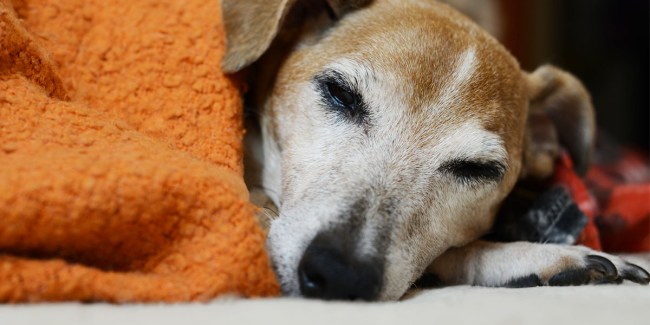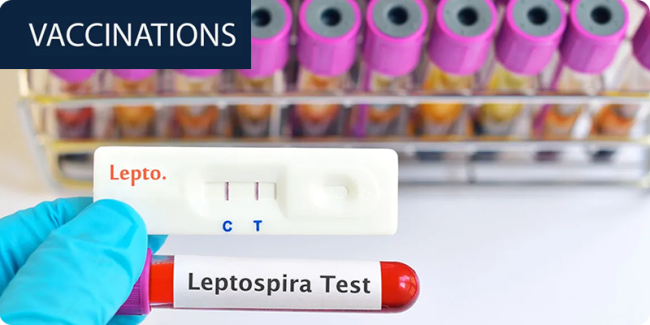
What to do when Fluffy has fleas
Get tips on how to spot fleas and what to do if you find them
Fluffy hasn’t been acting like herself in weeks. She’s stopped purring. And instead of curling up in a lap and dozing, she’s constantly scratching her ears. And she’s grooming so much so that there’s the beginning of a bald patch.
Those are just a few of the major signs of a cat with fleas. If your cat shows any of these signs1, it’s possible that fleas have taken up residence in her fur — and most likely your home as well:
• Scratching around the ears
• Excessive grooming
• Small dark insects burrowed into or jumping off the pet
• Brown-black specks on the cat’s fur
• Flea eggs (tiny white grains)
• Bald spots
• Agitation
Spring and summer are prime times for flea infestations. These parasites thrive in warm, humid climates at temperatures of 65 to 80 degrees. Prolific breeders, a female flea can lay 40-50 eggs a day. When mature, half those eggs (the female half) can produce up to 20,000 new fleas in two months’ time.2
Cats and dogs aren’t the only ones who suffer once a flea hitches a ride. They can propel themselves onto us, in our hair and our bedding, carpets, and furniture cushions.
If you suspect your pet has fleas, consult your veterinarian.
Protecting your pet from fleas
The flea life cycle consists of four stages: egg, larva, pupa, and adult.3 The good news: With the right prevention, you can eliminate fleas from your cat. Fortunately, there are many prescription flea-prevention products available.
In the past, pet parents could only rely on traditional flea collars, shampoos, and sprays. Today’s products are safer, more convenient, and more effective.
BRAVECTO® (fluralaner topical solution) for Cats is perfectly suited to break the flea life cycle. It works for up to 12 weeks* in a single dose.2 Adult fleas lay eggs shortly after hitching a ride on your cat. The eggs then hatch into larva and infiltrate your carpets, floorboards, under furniture, etc. Larvae turn into pupae before emerging from their cocoons and turning into adult fleas3. This whole cycle takes several months, but with a long-lasting product like Bravecto, you can stop fleas dead in their tracks and break their lifecycle before they make your cat’s life miserable – killing 100% of fleas in 8 hours.2
Getting rid of fleas in your home
In case there are still fleas in the developmental life stages in your home, thorough cleaning is wise.
Do an in-depth cleaning of areas where fleas like to breed. Wash rugs, bedding, and pet bedding. Vacuum and sweep floors and carpeted areas along the baseboards. Keep up with your vacuuming and sanitation practices until you’re certain all fleas are gone.4
REFERENCES:
- What do fleas look like on cats? PetMD. https://www.petmd.com/cat/what-do-fleas-look-cats
- Bravecto® (fluralaner topical solution) for Cats prescribing information. Merck Animal Health 2022.
- Fleas. CAPCvet.org. https://capcvet.org/guidelines/fleas/
- Getting rid of fleas. CDC.gov. https://pets.webmd.com/kill-fleas-at-home
IMPORTANT SAFETY INFORMATION
BRAVECTO 1-MONTH (fluralaner) Chews: indicated for dogs 8 weeks of age and older. The most commonly reported adverse reactions include itching, diarrhea, vomiting, decreased appetite, elevated ALT, lethargy, and weight loss. BRAVECTO 1-MONTH (fluralaner) Chews is not effective against A. americanum in puppies less than 6 months of age. BRAVECTO (fluralaner) Chews: The most commonly reported adverse reactions include vomiting, lethargy, diarrhea, anorexia and pruritus. In some cases, adverse events have been reported following use in breeding females. BRAVECTO (fluralaner topical solution) for Dogs: The most commonly reported adverse reactions include vomiting, hair loss, diarrhea, lethargy, decreased appetite, and moist dermatitis/rash. BRAVECTO (fluralaner topical solution) for Cats: The most commonly reported adverse reactions include vomiting, itching, diarrhea, hair loss, decreased appetite, lethargy, and scabs/ulcerated lesions. BRAVECTO (fluralaner topical solution) for Cats is not effective against American dog ticks beyond 8 weeks of dosing. BRAVECTO PLUS (fluralaner and moxidectin topical solution) for Cats: The most commonly reported adverse reactions include vomiting, hair loss, itching, diarrhea, lethargy, dry skin, elevated ALT, and hypersalivation. BRAVECTO PLUS (fluralaner and moxidectin topical solution) has not been shown to be effective for 2 months in kittens less than 6 months of age. Use with caution in cats that are heartworm positive. The effectiveness of BRAVECTO PLUS (fluralaner and moxidectin topical solution) to prevent heartworm disease after bathing or water immersion has not been evaluated.
BRAVECTO (fluralaner) has not been shown to be effective for 12-weeks’ duration in puppies or kittens less than 6 months of age. BRAVECTO (fluralaner) Chews and Topical Solution for dogs is not effective against the lone star tick beyond 8 weeks of dosing. BRAVECTO (fluralaner topical solution) for Dogs and Cats and BRAVECTO PLUS (fluralaner and moxidectin topical solution) for cats are for topical use only. Avoid oral ingestion. The safety of BRAVECTO (fluralaner topical solution) for Cats and BRAVECTO PLUS (fluralaner and moxidectin topical solution) has not been established in breeding, pregnant, and lactating cats.
All BRAVECTO (fluralaner) products contain fluralaner, which is a member of the isoxazoline class. This class has been associated with neurologic adverse reactions including tremors, ataxia, and seizures. Seizures have been reported in dogs receiving isoxazoline class drugs, even in dogs without a history of seizures. Use with caution in dogs with a history of seizures or neurologic disorders. Neurologic adverse reactions have been reported in cats receiving isoxazoline class drugs, even in cats without a history of neurologic disorders. Use with caution in cats with a history of neurologic disorders.
More like this
- Caring for a senior pet
 Caring for a senior pet Cats and dogs may need … Read more
Caring for a senior pet Cats and dogs may need … Read more - Dealing with your pet’s allergies
 Dealing with your pet’s allergies Just like humans, pets can … Read more
Dealing with your pet’s allergies Just like humans, pets can … Read more - Five things you may not know about leptospriosis
 Five things you may not know about leptospirosis Leptospirosis is … Read more
Five things you may not know about leptospirosis Leptospirosis is … Read more





